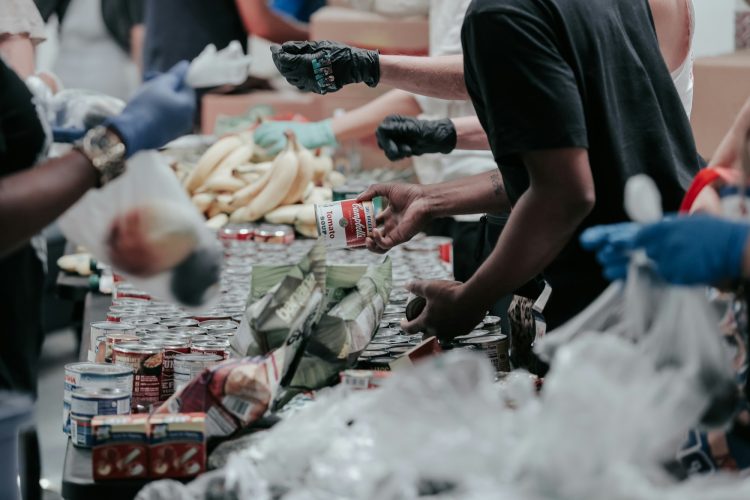TriplePundit • Where to Find Food If Your SNAP Benefits Are Cut Off, and How to Help If You’re Able

With the U.S. government shutdown stretching into a full month, 1 in 8 Americans are set to lose their food assistance tomorrow. The U.S. Department of Agriculture confirmed this week that benefits for the Supplemental Nutrition Assistance Program (SNAP, formerly known as food stamps) will not go out as scheduled on Nov. 1, writing on its website “the well has run dry.”
While two federal judges ruled the USDA must use a $5 billion emergency fund to cover SNAP, millions of people will still need assistance. Even with emergency funding, payments will be delayed and less than what households typically receive. Those who’ve already used up last month’s payment to keep food on the table for their families will face difficult choices, and many may not know where to turn.
Whether you count on SNAP for food assistance, or you have the means and want to help, read on to find out how communities are reaching out to support each other even as their government has failed to step up.
Who is eligible for SNAP
Much of the discourse around SNAP benefits in recent weeks harkens back to the racist, classist and wildly inaccurate “welfare queen” trope of the 1980s, so let’s start by dispelling a bit of misinformation. Not only must a person or household have a net annual income at or below the federal poverty line to be eligible for SNAP, but the program also caps total assets — meaning there’s no way to sit back and “get rich” off the government by using food assistance.
Most adults under age 64 are limited to three months of SNAP benefits every three years unless they are working, unable to work because of a disability, are pregnant or have young children in their household. The work requirement for SNAP was made even more rigid by the “big, beautiful” budget bill passed earlier this year, which removed the exemption for veterans, former foster children and people experiencing homelessness, causing around 4 million people to lose their eligibility for assistance.
Because of these requirements, federal data shows about a quarter of the nation’s 42 million SNAP recipients are working but cannot afford basic expenses, about half are not expected to work becasue they are over 64 or have a disability, and the rest are predominantly households with young children. Though stigma and stereotypes often fall on people in poverty who rely on SNAP, the same scrutiny rarely comes back to the multibillion-dollar companies that fail to pay roughly 10 million SNAP recipients enough to keep food on the table. The last major piece of research into the largest employers of SNAP beneficiaries, published in 2020 by the Government Accountability Office, put corporate giants like Walmart and McDonald’s at the top of the list.
Ways to access food if your SNAP benefits are cut off
Remember, there is no shame in needing help, and there are people in your community who are willing and able to provide it even if the federal government won’t.
Find out if your state is still funding SNAP. Across the country, state governments are rushing emergency funding packages through their legislatures to cover the cost of SNAP benefits and support food banks. NBC News reached out to all 50 states to find out what they’re doing. States including Virginia and Rhode Island have already secured funding to cover November benefits. See the full list here.
Search for a food bank near you. Use resources like FoodFinder and Feeding America’s food bank locator to find food banks, food pantries, and community tables where your neighbors are stepping up to make sure everyone can eat.
Share food with neighbors. Even as people go hungry, the reality is that about a third of the U.S. food supply is never eaten and ends up as waste. Over the years as people work to solve the problem of edible food going into the bin instead of feeding hungry people, some great apps and resources have popped up to help neighbors and businesses share food they can’t use before it expires. Use apps like Olio to connect with neighbors sharing extra food, and check out Too Good To Go, Karma and Flashfood for discounted items from grocery stores and restaurants.
Use apps for grocery discounts. Services like Flipp make it easy to find discounts at local grocers without shuffling through the weekly flyers, while apps like Ibotta and Checkout 51 offer cash back on your shopping.
Find tips to stretch your budget. We love social media creators like The Divine Chef, Kiki Rough, and Food Pantry Girl for recipes and ideas to make your dollar go further.
Ways to help if you’re able
Give to food banks. The cost of living crisis already has U.S. food banks stretched thin, and even with emergency funding from state governments, your local food bank could probably use your help. Do a quick online search to find organizations near you, or use Charity Navigator’s hunger action database. If you’d like to donate food, check your local food bank’s website or call them to see what they need.
Volunteer. Along with funding, food banks need extra hands to make more food available in their communities. A quick online search will yield plenty of results near you, and if you’re fortunate to get paid time off to volunteer, now is a great time to use it.
Take a spin on trick or treat. Inspired by a Facebook post from the United Way Family Resource Center, a grassroots movement is growing online to make the most of trick or treating by adding shelf-stable foods to bags and baskets given out for Halloween. Learn more at The 19th.
Check on your neighbors. It can be hard for people to ask for help, leading to isolation and lonliness. Reaching out proactively to neighbors you think could be impacted by the shutdown goes a long way, Heather Black, vice president of 211 System Strategy at the United Way, told The 19th. Ask if they need something from the store the next time you’re headed there.
Host a food drive. Feeding America offers resources to help anyone organize a food drive in their community, or host an online food drive for their digital networks.
Call your representatives. U.S. Congress continues to get paid even as other federal employees are working for free and people are at risk of losing their benefits. Make your voice heard by calling your representatives in Congress — now to demand funding for nutrition assistance, and after the crisis to call for a living wage, because millions of people who are working full time shouldn’t be at risk of going hungry. Use databases like Common Cause to find your representatives’ contact information.
We’re all in this together. Let’s do our best to support each other. If you have an idea you’d like to share for how people can get food if they need it or help if they’re able, we’d love to hear about it at contact@triplepundit.com.
Image: Joel Muniz/Unsplash



Post Comment